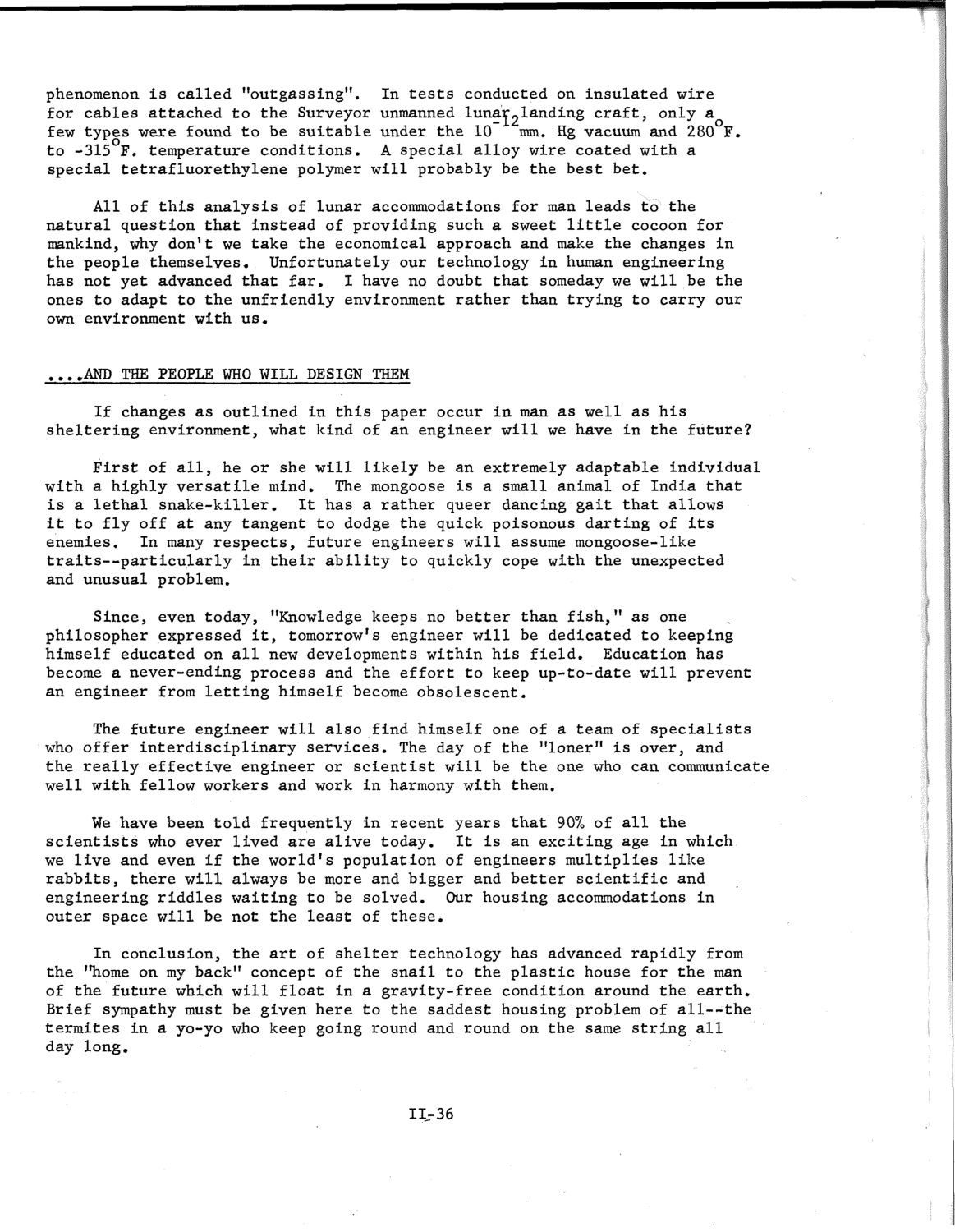| |
| |
Caption: SWE - Proceedings of the First International Conference of Women Engineers and Scientists
This is a reduced-resolution page image for fast online browsing.

EXTRACTED TEXT FROM PAGE:
phenomenon is called "outgassing". In tests conducted on insulated wire for cables attached to the Surveyor unmanned lunar„landing craft, only a few types were found to be suitable under the 10 mm. Hg vacuum and 280 F. to -315 F. temperature conditions. A special alloy wire coated with a special tetrafluorethylene polymer will probably be the best bet. All of this analysis of lunar accommodations for man leads to the natural question that instead of providing such a sweet little cocoon for mankind, why don't we take the economical approach and make the changes in the people themselves. Unfortunately our technology in human engineering has not yet advanced that far. I have no doubt that someday we will be the ones to adapt to the unfriendly environment rather than trying to carry our own environment with us. ....AND THE PEOPLE WHO WILL DESIGN THEM If changes as outlined in this paper occur in man as well as his sheltering environment, what kind of an engineer will we have in the future? First of all, he or she will likely be an extremely adaptable individual with a highly versatile mind. The mongoose is a small animal of India that is a lethal snake-killer. It has a rather queer dancing gait that allows it to fly off at any tangent to dodge the quick poisonous darting of its enemies. In many respects, future engineers will assume mongoose-like traits—particularly in their ability to quickly cope with the unexpected and unusual problem. Since, even today, "Knowledge keeps no better than fish," as one philosopher expressed it, tomorrow's engineer will be dedicated to keeping himself educated on all new developments within his field. Education has become a never-ending process and the effort to keep up-to-date will prevent an engineer from letting himself become obsolescent. The future engineer will also find himself one of a team of specialists who offer interdisciplinary services. The day of the "loner" is over, and the really effective engineer or scientist will be the one who can communicate well with fellow workers and work in harmony with them. We have been told frequently in recent years that 90% of all the scientists who ever lived are alive today. It is an exciting age in which we live and even if the world's population of engineers multiplies like rabbits, there will always be more and bigger and better scientific and engineering riddles waiting to be solved. Our housing accommodations in outer space will be not the least of these. In conclusion, the art of shelter technology has advanced rapidly from the "home on my back" concept of the snail to the plastic house for the man of the future which will float in a gravity-free condition around the earth. Brief sympathy must be given here to the saddest housing problem of all--the termites In a yo-yo who keep going round and round on the same string all day long. 11-36
| |